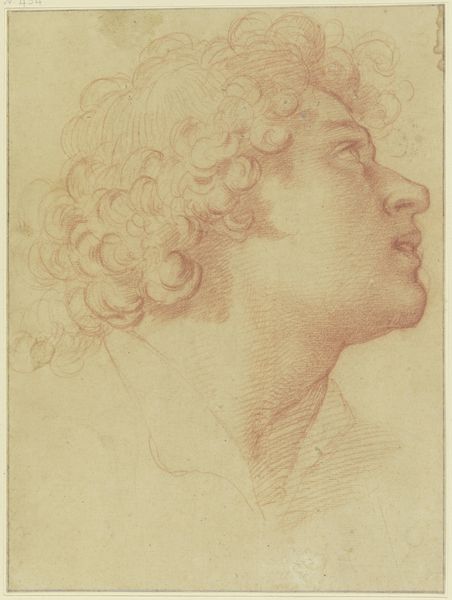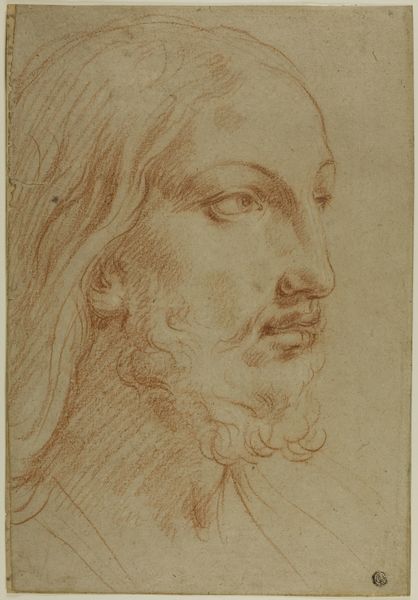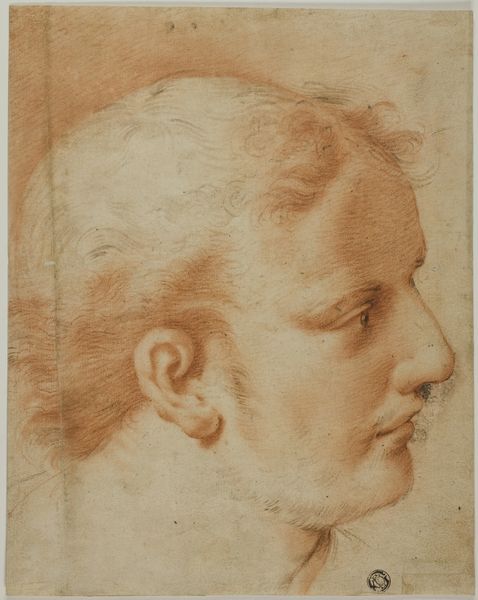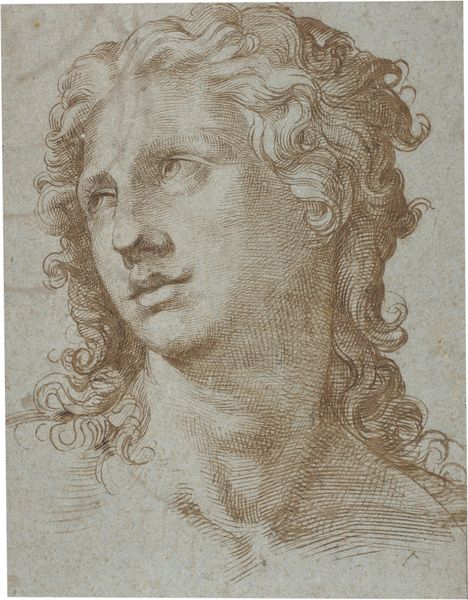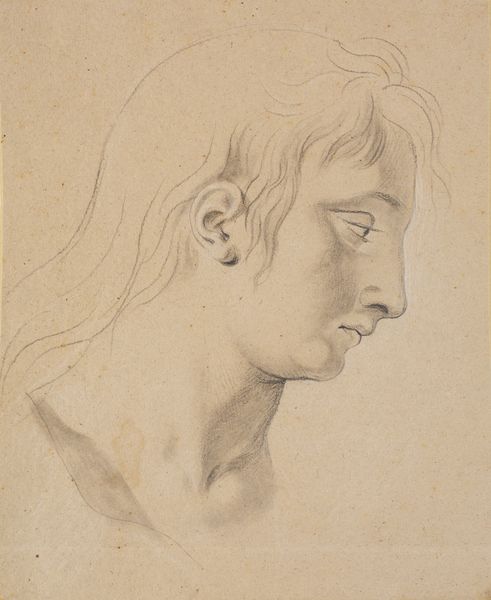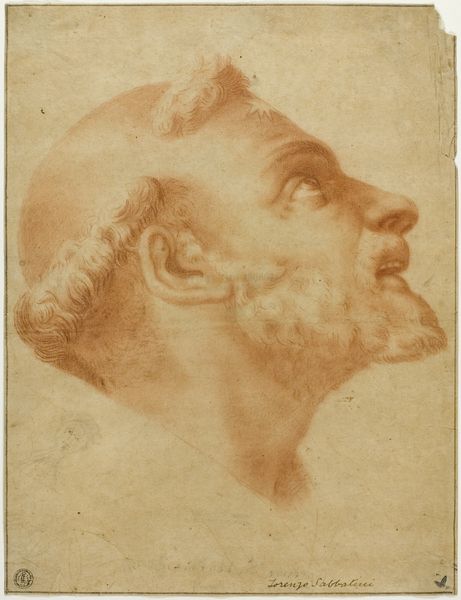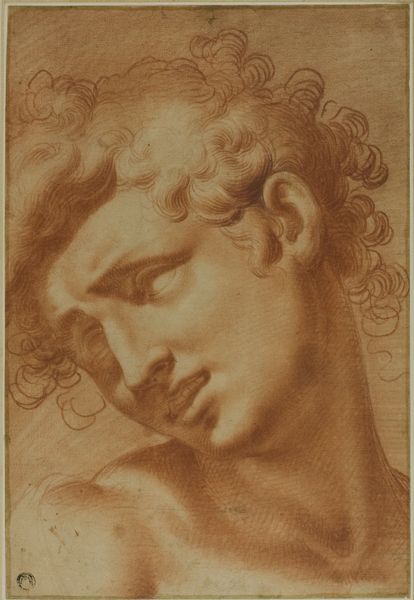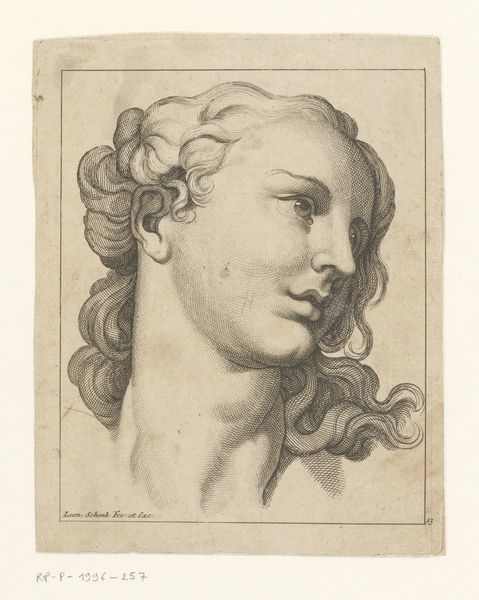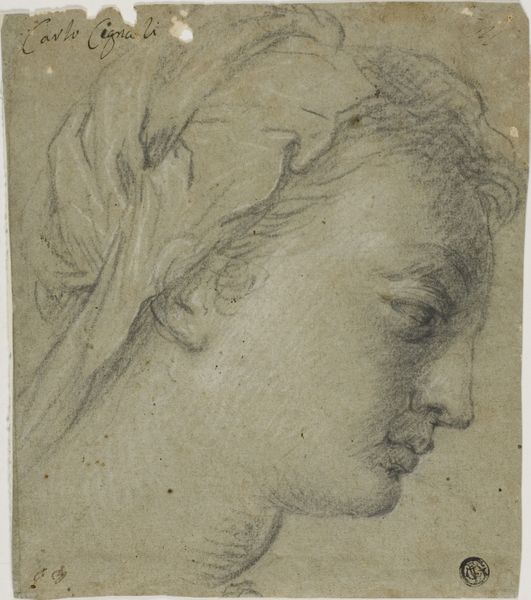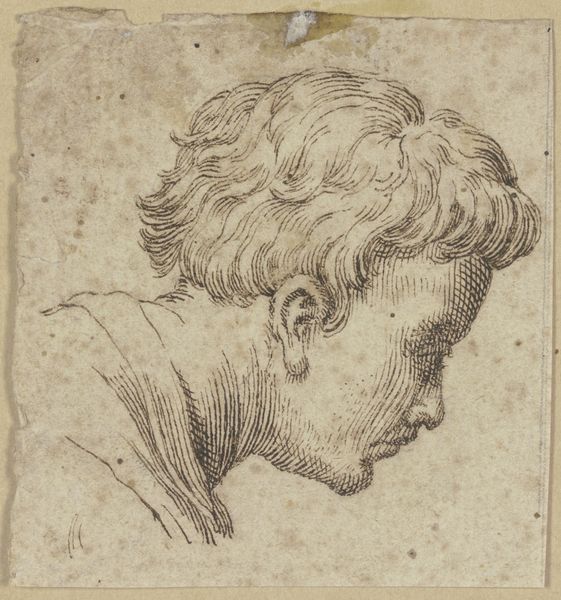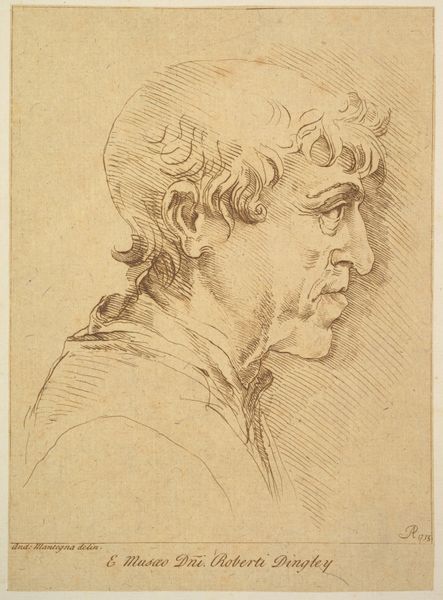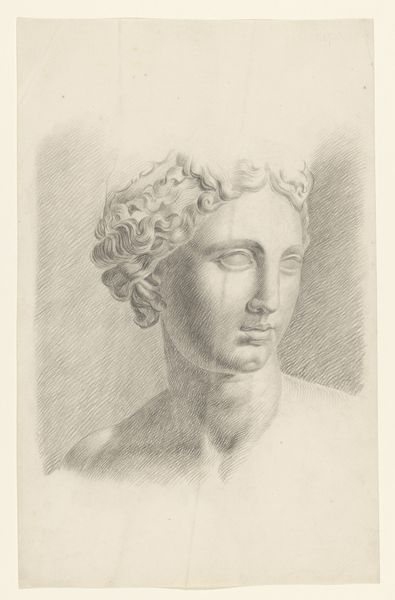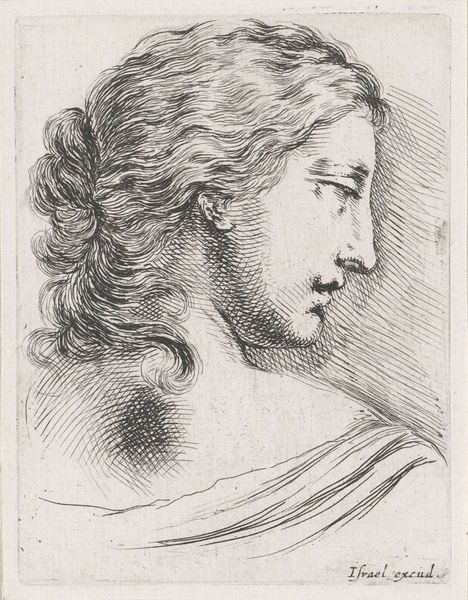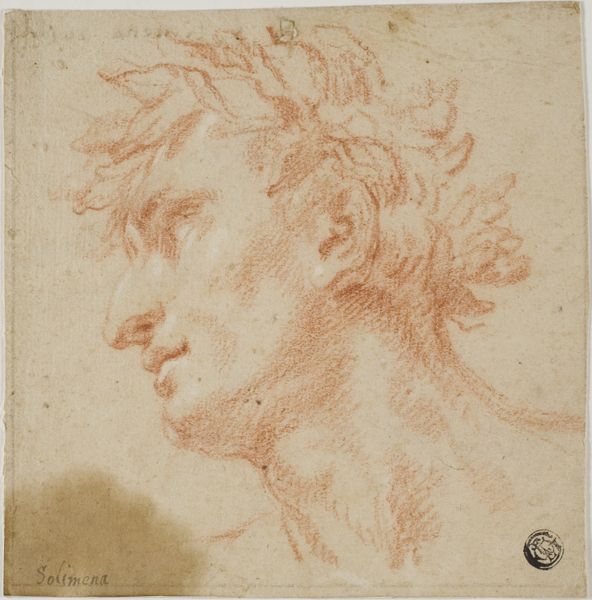
Studie nach dem Kopf von Michelangelos _Giuliano de' Medici_ c. 1526 - 1534
0:00
0:00
drawing, ink
#
portrait
#
drawing
#
high-renaissance
#
charcoal drawing
#
ink
#
geometric
Copyright: Public Domain
Editor: Right, let's talk about this intriguing drawing: "Studie nach dem Kopf von Michelangelos _Giuliano de' Medici_" created around 1526-1534 by Baccio Bandinelli. It's currently housed in the Städel Museum, done with ink on paper. My first impression is how the artist built form with so much consistent hatching - it seems incredibly methodical, yet the expression feels somewhat… vacant. What do you see in this piece, especially given that it is a copy after another artwork? Curator: Ah, a copy, yet not merely a copy. Imagine Bandinelli, pen in hand, wrestling with Michelangelo's genius. He's not just reproducing; he's internalizing, perhaps even challenging. I see this incredible, almost obsessive, layering of lines as a kind of meditation. It reminds me of how a writer might repeat a phrase to understand its rhythm and meaning. The 'vacant' expression, as you say, perhaps that's the point. Maybe it’s about the Platonic ideal, beyond earthly emotion. Does the geometric quality strike you as significant in achieving this effect? Editor: I see what you mean about challenging genius. The hatching flattens the face, doesn’t it? There are only slight variations in tone. It’s less emotionally engaging, more intellectual. The rigid crosshatching pattern contrasts sharply with the naturalistic rendering of the face, almost as if Bandinelli is imposing order. Curator: Precisely! The High Renaissance sought harmony between the ideal and the real. This drawing, in its very controlled, almost graphic quality, emphasizes that pursuit of order, the artist’s intellectual grasp. Don't you think this controlled geometric hatching style provides it with its own individual presence and voice? What Bandinelli learned from the experience is ultimately ineffable. Editor: Yes, I now have a different impression of Bandinelli’s technique. Initially I viewed this mechanical-like rendering as almost dull, but thinking of it as him ‘grappling’ with a predecessor for some form of resolution offers me a renewed, elevated appreciation of the creative exercise as a learning process. Curator: Exactly! It’s not just imitation, it’s an encounter. And every encounter, in art as in life, transforms both parties, however subtly.
Comments
No comments
Be the first to comment and join the conversation on the ultimate creative platform.
